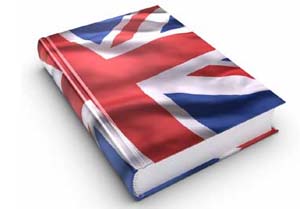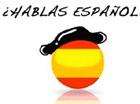PERCY BYSSHE SHELLEY
ODE TO THE WEST WIND
Content Ode to the West Wind was
conceived and chiefly written in a wood beside the Arno,
near Florence. It is divided into two parts; the first one, consisting of the
first three stanzas, deals with the effects of the wind on the land, the sky
and the sea, through the different seasons, and Shelley addresses the wind
personally as if it were a deity. The second part, on the contrary, consisting
of the final two stanzas, deals with the poet's identification with the wind,
the force and power of which he summons, both to give new energy to his work
and for the political regeneration of Europe. Shelley, in fact, is concerned
with the regeneration of himself poetically, spiritually and of Europe
politically. The west wind is seen as the force necessary to effect this
generation.
As already pointed out, stanza
1 describes the effect of the wind on the land first in autumn and then in
spring. In the former season the wind is presented as a destroyer of the
previous season and its action is characterized by images of death. This
function changes in spring when the wind is seen as a preserver, thus restoring
the life that autumn had taken away from the land. The images change
accordingly and words which evoke rebirth and life are introduced. Right from
stanza 1 the wind is addressed directly, through the use of the second-person
pronoun thou. This personification is further developed through the
attribution to the wind of verbs denoting human faculties, like wakest, hear, etc.
In stanza 2 the
action of the wind shifts from the land to the sky, but the images the poet
uses are still linked to the preceding ones. The clouds in fact are compared to
leaves and boughs. These clouds are angels, in the sense of messengers, of the
rain and lightning that will come at nightfall. Also in this case, however, the
wind is presented in autumn and its function is a destructive one, because it
deals with rain, hail and storm. To add to its destructive force, the wind is
also addressed as dirge and sepulchre, which are associated with
death.
In stanza 3 the mood
changes completely: peace is restored and the violent energy of the preceding
stanzas has ceased. Now the action of the wind is described in spring and on
the sea, its function being a creative one. The sea, in fact, is seen as the
place where in ancient times civilization was born. He visualizes how the wind
disturbed the typical calm of the Mediterranean sea, personified as a languid
form, "lulled by the coil of his crystalline streams", and reflecting "old
palaces and towers", but reflecting them lazily, like a person asleep. The
first part of stanza 3 is characterized by a softer atmosphere and sweet
colours (the azure and crystalline sea) and by the presence of
flowers. Moreover, soft consonants and falling cadences have replaced the
earlier harsher consonants. Towards the end of the stanza, however, a gloomier
mood re-emerges and the scene shifts from the Mediterranean sea to the Atlantic
Ocean, described in powerful and frightening terms, whose level powers
cleave themselves into chaos and whose vegetation in the depths of the sea
shakes as with fear.
Stanza 4 describes
the poet's identification with the wind and introduces a more personal tone. He
draws together the dead leaves of the first stanza, the clouds of the second
and the power that the waves have, so that he could combat the evils he wanted
to destroy. He speaks about his childhood when he ran after the wind, thus
contrasting his past energy with his present misery. He feels that he has lost
his boyhood's freedom, when everything seemed possible to him, and that the
passing of the time has tamed and enslaved him. There is an echo here of
Wordsworthian thought, but with a difference of emphasis: Wordsworth felt that
he had lost the visionary spirit of childhood; Shelley is concerned with the
loss of his personal physical and spiritual energy. That's why he then asks the
wind to help him regain the energy he has lost.
Such a prayer reaches its
climax in stanza 5, when he asks the wind to be his lyre, to renew him,
to reanimate his spirit, so that his "dead thoughts", blown about the universe,
will come to new life, like the seeds blown with the dead autumn leaves. His
message is one of hope for mankind: autumn heralds the approach of winter,
representing death, but spring, representing the regeneration of mankind, will
follow after. However, the very end of the poem is in a certain sense
perplexing. We expect another exclamation but the poem closes with a question.
Shelley is not quite so certain as his build-up suggested and at the final
moment a doubt vexes his mind. Can regeneration arrive so mechanically?
Style Formally, the ode is composed of five
stanzas each consisting of a sonnet formed of four units of terza
rima completed by a couplet. In terza
rima, the verse form so brilliantly employed by Dante
in his Divine Comedy, the first and the third lines rhyme and
the rhyme sound of the second line is taken up by the fourth and sixth lines.
This, by linking the stanzas to each other, grants a continuous movement
forward which parallels the forward movement of the wind.
The ode takes on the form
of a prayer addressed to a divinity. The first three stanzas all conclude with
the vocative Oh hear, but only from stanza 4 does the tone become more
personal and the identity of the supplicant is revealed. In fact, as is common
in prayers, the first half of the poem describes the attributes, both
frightening and consoling, of the deity. The powers of the west wind are
manifested through the seasons of the year as a destroyer, preserver and
creator, and in the elements of nature on land, in the air and in the sea. Up
until the fourth stanza there is no mention of the supplicant, but in the final
two stanzas the poet confesses his own frailties and implores the deity to make
the poet's work part of a spiritual awakening of a new year. Shelley
acknowledges his need for a force beyond his own calculation to lift him and to
disseminate a new gospel of hope. Always the divine power of the wind is
stressed, for example through its identification as charioteer and enchanter,
which emphasize its supernatural essence.







